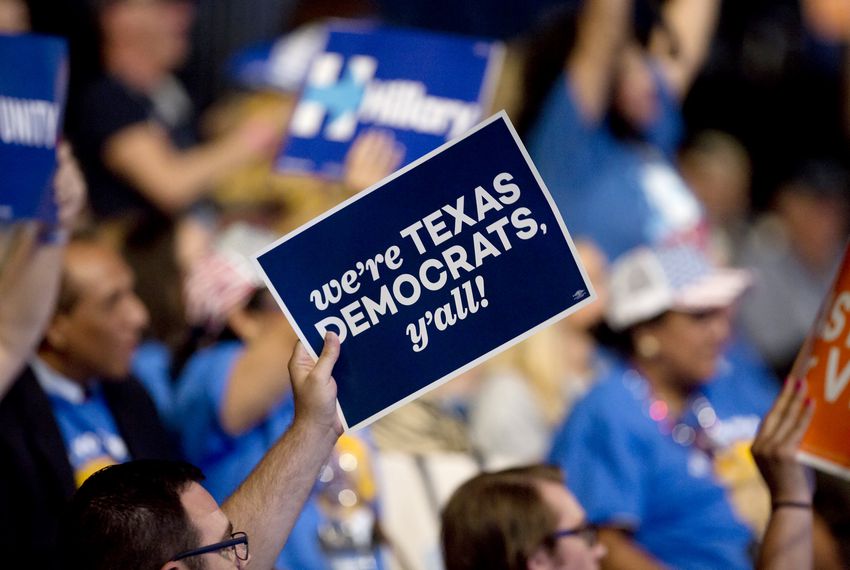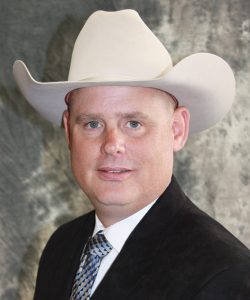Here’s how Texas Democrats dole out their 261 delegates in the presidential primary

[adning id=”33097″ padding=”15″]
[adning id=”33099″ fixed=”1″ size=”full”]

The race for the Democratic nomination for president officially got its start Monday night with the Iowa caucuses. New Hampshire, South Carolina and Nevada will soon follow. But Texas looms large over the next month. Its primary is on March 3 and it will award more delegates to Democratic presidential candidates than all of the primaries before Super Tuesday — combined.
[adning id=”33207″]
The state will send 261 delegates to the Democratic National Convention from July 13-16 in Milwaukee. With one of the largest delegations and a large Hispanic population, experts say Texas could play a large role in selecting the nominee.
“I would say not only are the Texas primaries important, they’re probably, in many ways, more important than previous cycles … because of the incredibly crowded field,” said Rebecca Deen, chair of the political science department and associate professor at the University of Texas at Arlington. “We are also in on Super Tuesday with states like California, so that’s going to get a huge amount of attention.”
But, despite Texas Democrats finalizing plans in 2015 to revamp their complicated nominating process for presidential candidates in the primaries, the party’s process of allocating delegates still remains confusing to voters.
What are the different types of delegates and how are they allocated?
During the Democratic National Convention, 3,979 pledged delegates — including the 228 Texas pledged delegates — will vote on the first ballot to select their presidential candidate. While there’s no penalty under Texas law for voting for someone different, pledged delegates are bound under state law to vote on the first ballot for who they were elected for, unless their candidate “releases them.”
During the March 3 primaries, Texans in both parties will vote to determine how pledged delegates in their party vote. While the Texas Republican party is expected to allocate all of the pledged district and statewide delegates to the candidate who receives the respective majority in the district and state in March, the Texas Democratic party determines its delegates more proportionally.
District-level delegates:
At-large and Pledged Elected Party Officials (PLEO):
There are 49 at-large and 30 PLEO Democratic delegates in Texas, who are allocated based on the statewide vote for the Democratic presidential candidates in March. Similarly to the district-level delegates, these delegates are all proportionally assigned to the candidates who received at least 15% of the statewide vote in March.
To allocate the delegates, the party disregards votes for any candidates who do not receive more than 15% and uses the raw votes for the other candidates to assign the district-level and statewide delegates as proportionally as possible. For example, if two candidates each got 35% of the vote in a district and none of the other candidates received more than 15%, the two candidates would each get allocated half of the delegates assigned to that district. For statewide delegates, the party does the same process with the statewide vote for both the 49 at-large and 30 PLEO delegates.
These 33 remaining delegates, formerly known as superdelegates, include 12 Democratic congressmen and 21 Democratic National Committee members. These unpledged delegates’ votes are not determined by the ballot box, so they can vote for any of the candidates. However, the national Democratic Party decided that these delegates can no longer vote on the first ballot at the convention starting in 2020.
[adning id=”33207″]
How are the delegates selected?
First, local Democratic parties host county or senate district conventions during which they select delegates to the statewide party convention. At the Texas Democratic Convention in San Antonio in June, hundreds of Democrats will vote to select the district-level delegates for the candidate they support. Then, a committee will put together a list of 79 PLEOs and at-large delegates to finalize the rest of the delegation. Those delegates will go to the national convention.
When selecting the at-large delegates, the committee must also select people who meet the Texas Democrats’ affirmative action goals. The 261-person delegation must be perfectly split by gender and also needs to include a certain number of Hispanics, African Americans, Texans under 36, disabled Texans and other historically underrepresented groups.
How does nominating the candidates at the national convention work?
A Democratic candidate needs support from at least 1,991 pledged delegates to win the nomination on the first ballot. If a clear winner doesn’t emerge after the first ballot, the 771 total automatic delegates can then cast a ballot for any of the candidates until one receives more than 2,375 votes. Voting keeps happening until a majority supports one candidate.
“If there are two that are really close to the threshold … expect that those people in third and fourth place are going to release their delegates so that they can go vote (for someone else),” said Glen Maxey, the special projects director at the Texas Democratic Party.
What makes Texas different from other states?
There are two major differences between how Texas Democrats allocate delegates compared to other states. States generally allocate delegates to certain congressional districts or counties, but Texas assigns delegates to each of its 31 Senate districts instead.
Texas is also one of a handful of states to allocate delegates to districts by how Democrats have voted in past elections and not by voter registration. The Democratic Party gives states a few options on how to allocate delegates, and most states choose to allocate based on party registration, Maxey said. So, if a congressional district in a state has a larger number of registered Democrats, the district will be allocated more delegates.
“Almost every other state has, when people register to vote, they say ‘I’m a Democrat,’ or ‘I’m a Republican,’” Maxey said. “So you can look and say, ‘Okay, what is the party registration in CD-1 versus the party registration in CD-5.” and allocate the number of delegates based on how many Democrats. Texas doesn’t have party registration, so we don’t have that opportunity.”
Instead, the party determines the number of “real Democrats” in each district based on the Democratic turnout in the previous gubernatorial and presidential race.
ARTICLE BY MEGAN MENCHACA, texastribune.org
[adning id=”33207″]














